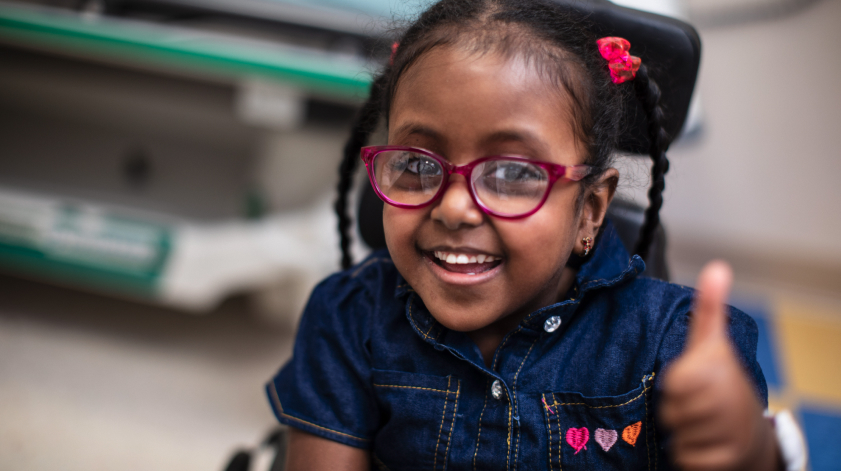Electroneurodiagnostic tests are noninvasive procedures that assess the electrical patterns of the brain in order to detect abnormalities. The experts at Children's National Hospital look at your child’s brain wave patterns and look for clues that help us determine a diagnosis that might indicate a neurological disorder — conditions affecting the brain, spinal cord and muscles. And, at Children’s National, our clinicians also are the readers of your child’s EEG. This results in faster recognition of abnormalities for more accuracy and continuity of care.
Our Providers
Our pediatric specialists provide personalized care for your child’s physical, mental and emotional health needs.
Contact Information
For appointments, please call 1-888-884-BEAR (2327) and for information, call 202-476-5645.
Tests we offer include electroencephalogram (EEG), video electroencephalogram (vEEG), evoked potential, electromyogram (EMG) and nerve conduction studies.
Electroneurodiagnostic Tests: What to Expect
Electroencephalogram
EEG is a test that measures and records the electrical activity of the brain. It is used to diagnose and evaluate conditions such as seizures and epilepsy. It also can be used to assess altered mental status and coma, febrile seizures, episodes of confusion, language disorders, movement disorders and at times, headache.
During the procedure, we attach special sensors (electrodes) to the scalp hooked by wires to a computer. The computer records the brain's electrical activity and displays it as wavy lines on a screen. Changes in the normal pattern of the brain's electrical activity indicate certain conditions, such as seizures.
A routine EEG takes about an hour. If possible, your doctor will perform the test while your child is awake and again while your child is asleep.
If you have a child with autism, other developmental disabilities or is a visual learner who is having an EEG at Children's National, help them learn what to expect with these resources:
- Home practice instructions (PDF)
- Visual schedule (PDF)
- Outpatient EEG teaching story (PDF)
- Overnight (inpatient) EEG teaching story (En Español) (PDFs)
Video Electroencephalogram
The vEEG is similar to a regular EEG, but it is combined with a video monitor so doctors can track both brain wave activity and record visual observations.
The video EEG may last from several hours to several days, depending on what the neurologist is trying to observe. Longer tests help detect brain wave activity that occurs infrequently, such as the activity that occurs during a seizure.
Electromyogram
EMG is a test used to assess the electrical function of muscles. Doctors use EMG (along with nerve conduction studies, described below) to detect the presence of muscle disease, inflammation of nerves, compression of nerves or a variety of other disorders that affect the nerve or muscles.
To perform an EMG, we place a needle electrode into the muscle to be tested. The electrode is attached by wires to a computer that records electrical activity. Similar to an EEG, the electrical activity in a muscle is shown as wavy lines on a screen.
The test takes 30 to 60 minutes.
Nerve Conduction Studies
Nerve conduction studies measure the speed of electric signals sent by nerves to muscles. These studies are used to find damage to the peripheral nervous system (all the nerves that lead away from the brain and spinal cord).
To perform nerve conduction studies, we attach an electrode to the skin right over the nerve to be tested. This electrode puts out electrical impulses. We also place a recording electrode over the muscle controlled by that nerve. The computer records the time it takes for the muscle to respond to the electrical impulse.
We usually perform nerve conduction studies before an EMG if both tests are being done.
These studies usually take 15 minutes to an hour — it depends on how many nerves and muscles are being evaluated.





